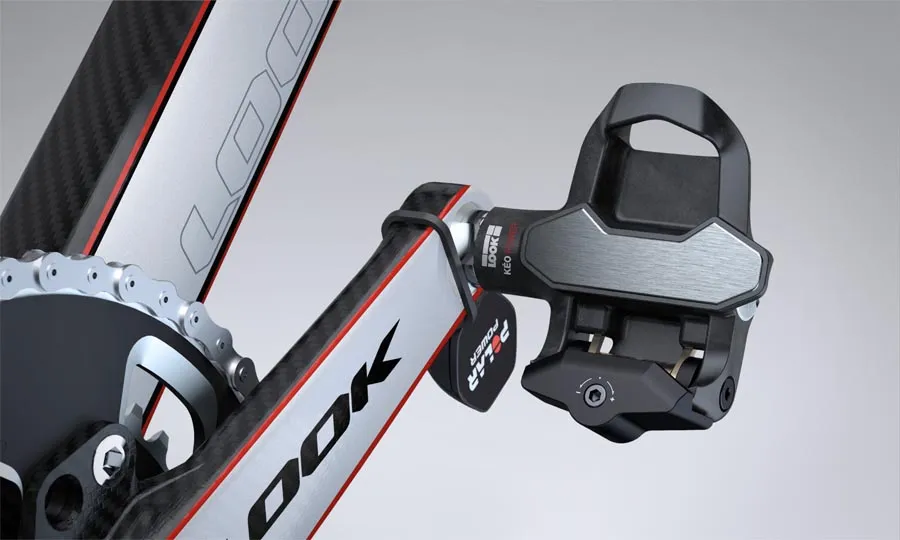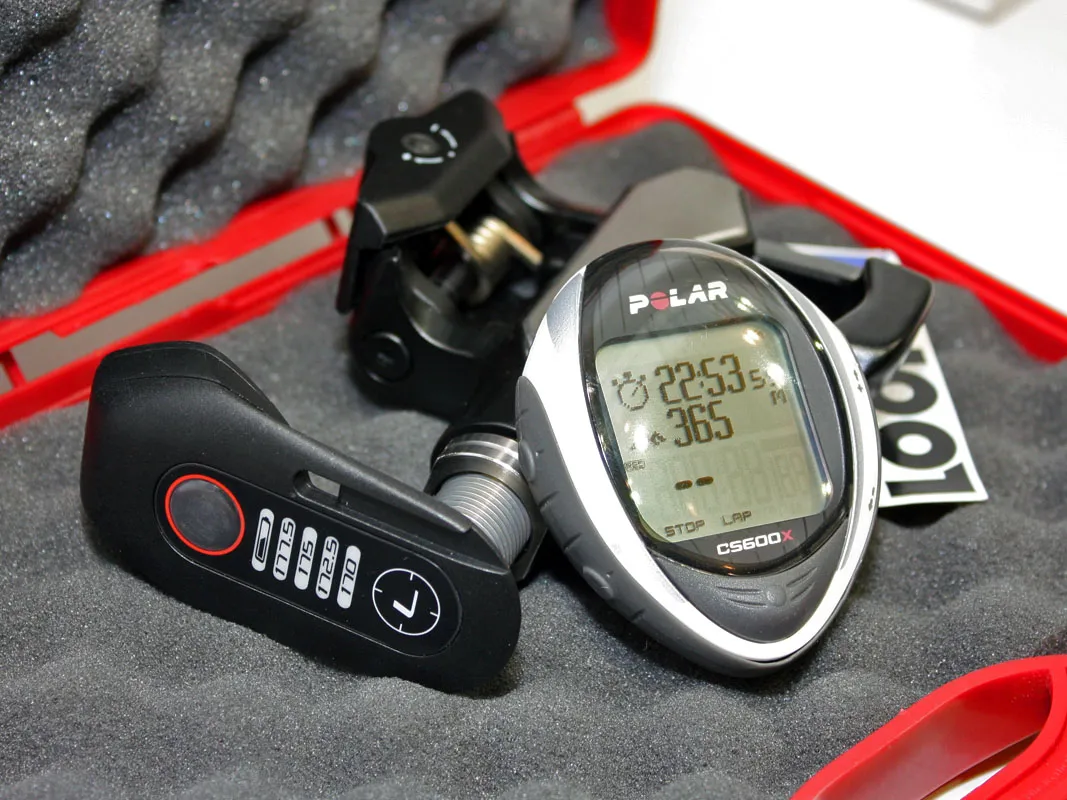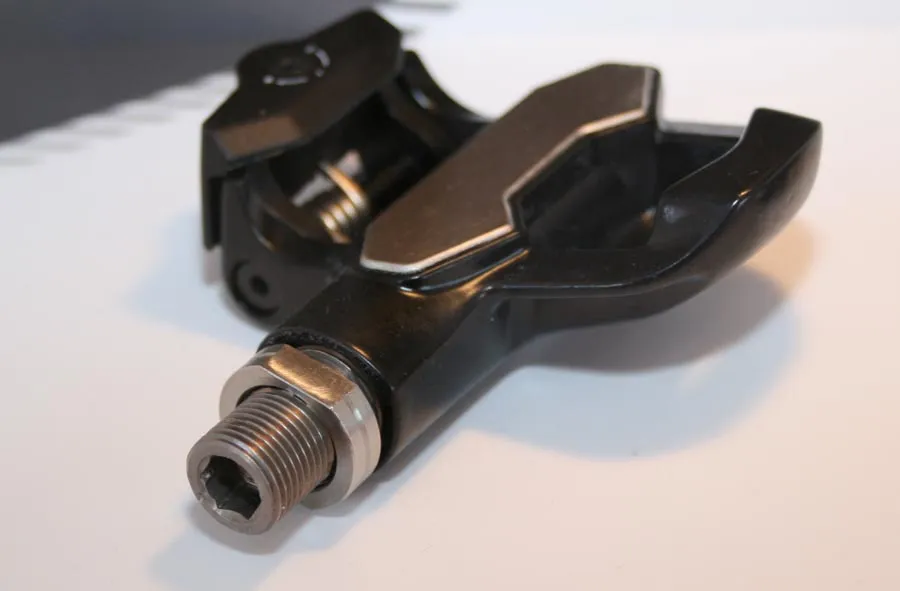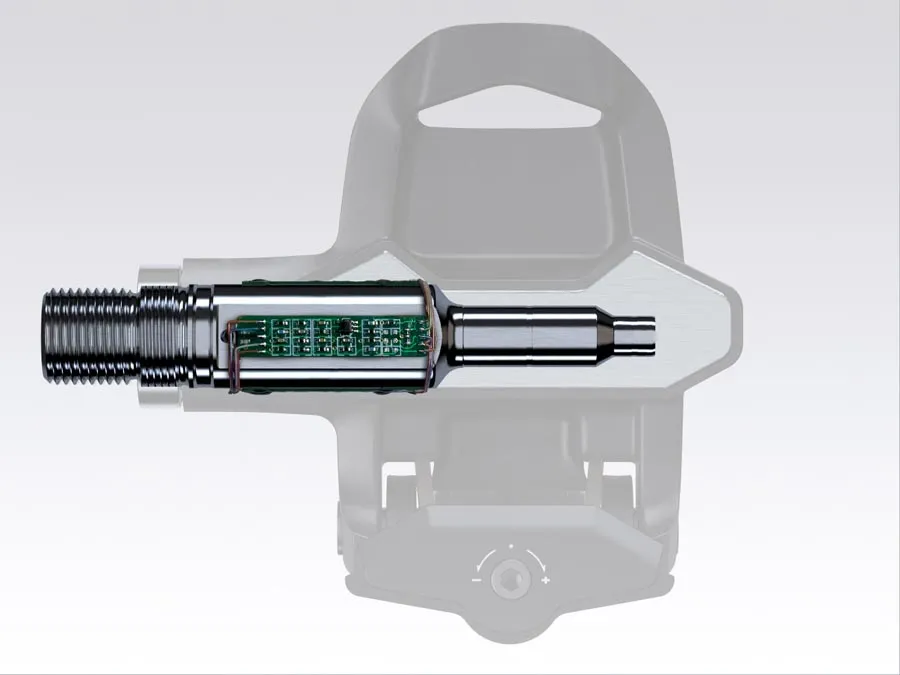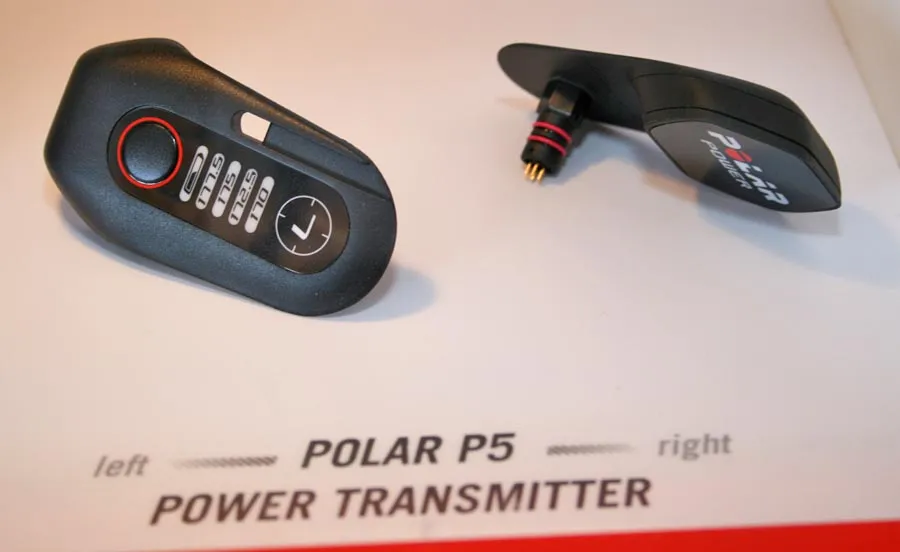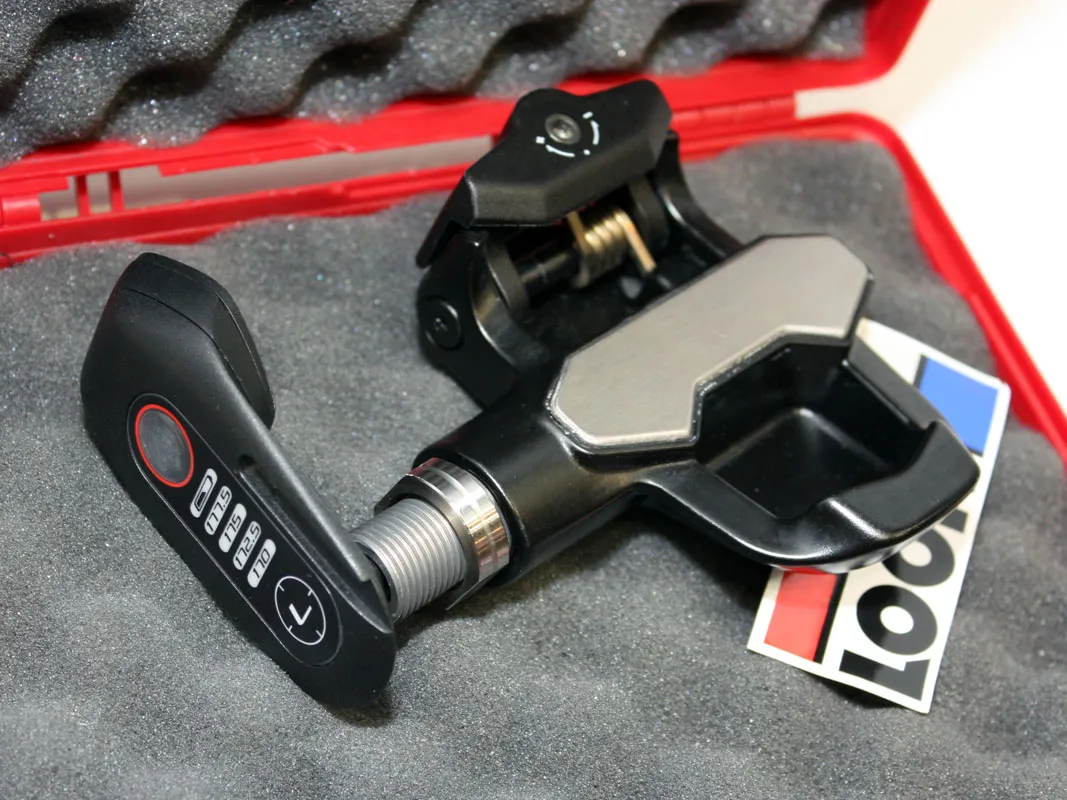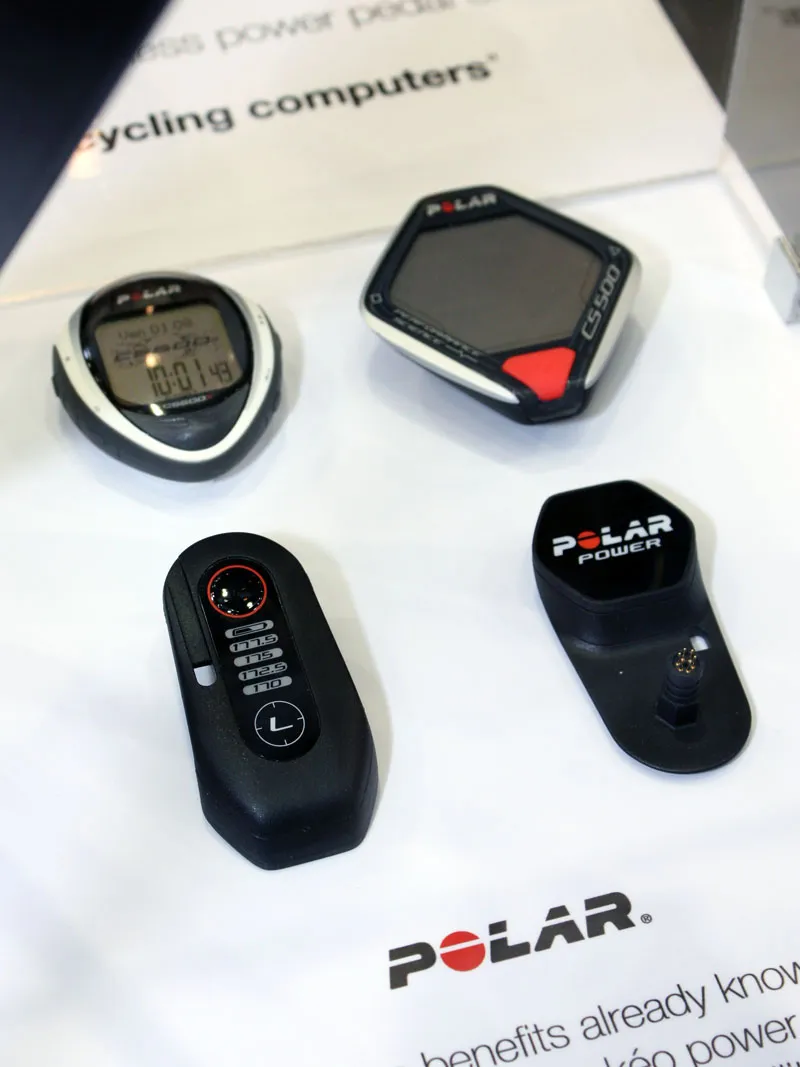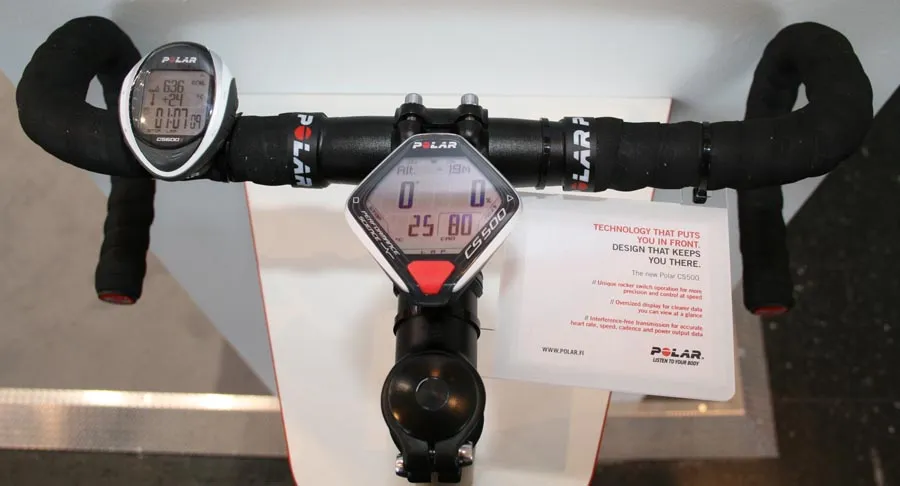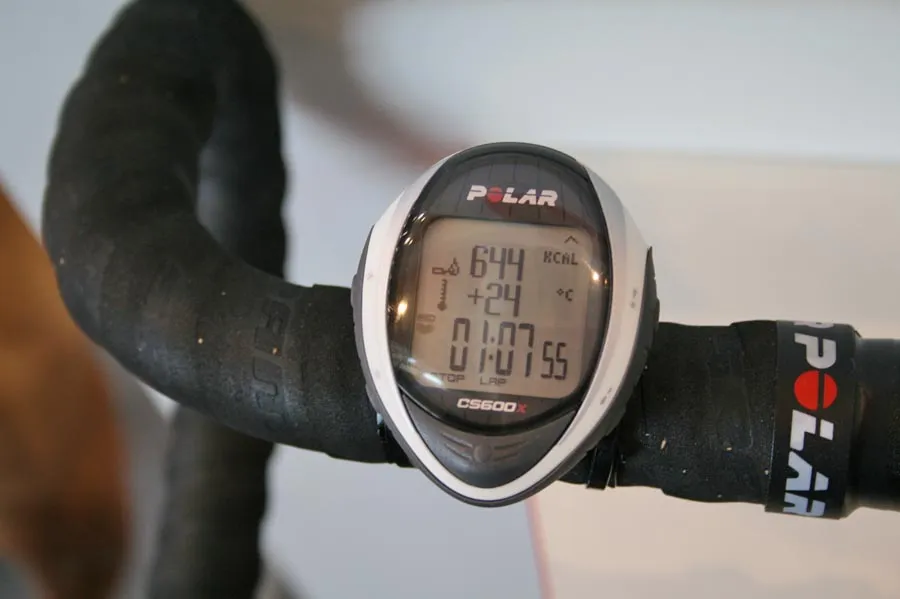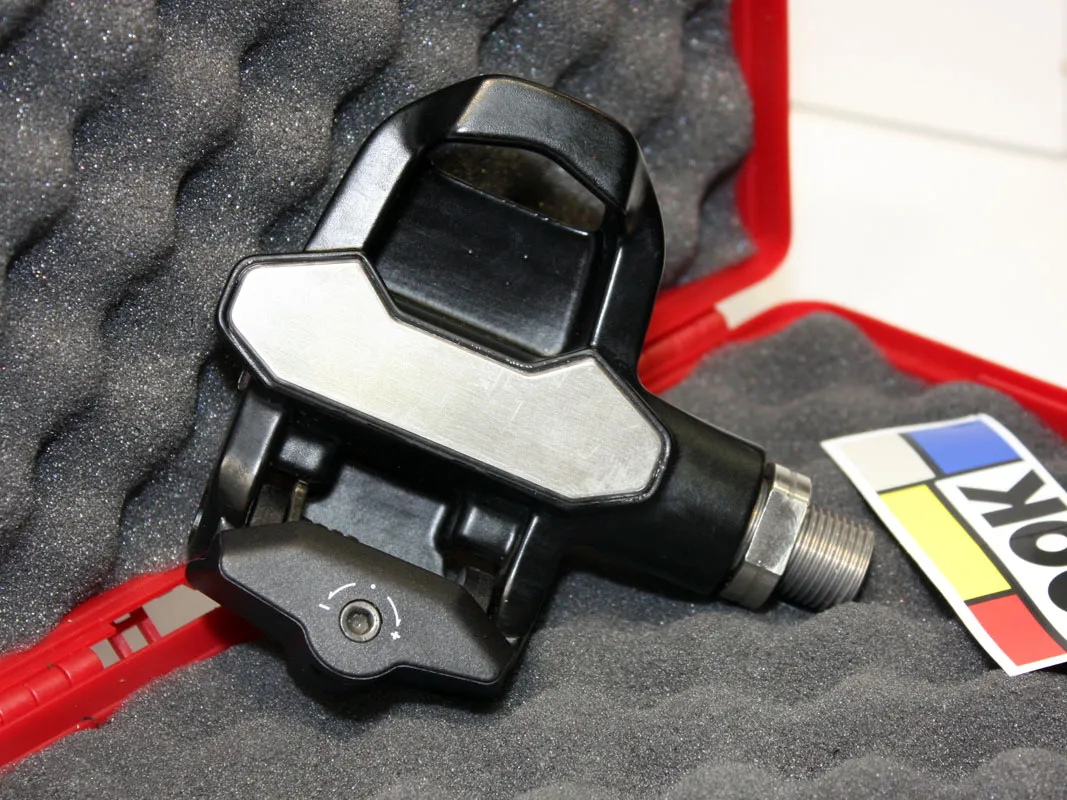Look and Polar have joined forces to develop yet another direct-measurement power meter option, this time housed within a pair of mostly standard KéO pedals.
Similar to the MetriGear Vector system shown at last year's Interbike show – which is still yet to materialise – the Polar Look KéO Power system features a four-sided array of eight strain gauges plus a wireless transmitter mounted directly to a modified pedal spindle.
According to Look and Polar, the system registers applied power with an accuracy of +/-2 percent and can also discern and display individual left and right leg outputs.
The system is based on Look's popular KéO pedal platform but with a modified injected carbon composite body that's almost completely filled in on its underside plus a threaded cap on the outer edge to facilitate installation of the special stainless steel spindle.
In spite of the added power measurement capabilities, claimed weight remains impressively low at just 170g per bare pedal. Add in the wireless transmitters, cleats, and hardware and the total claimed weight is still just 448g for the pair.
The transmitters use Polar's proprietary WIND wireless protocol and are designed for use with the company's CS500, CS600 or CS600x computer heads. This means that the new KéO Power isn't compatible with ANT+ devices such as the Garmin Edge 500 or 705, or CycleOps' impressive new Joule 2.0 head.
On the positive side, claimed battery life is very long at around five months if used three hours per day, seven days per week. Once the batteries are depleted, they're user replaceable with standard CR2354 cells. Moreover, the pedal-based system will also be relatively easy to transfer from bike to bike and can be used with any wheelset, unlike current crank or hub-based systems.
While Look and Polar say that the new KéO Power has already been tested and shown to work well, final details are still being ironed out and projected release isn't until spring 2011. Pricing is still to be determined as well, but the companies estimate the pedals and transmitters will cost around €1,500-1,800 – and the computers will cost extra.
